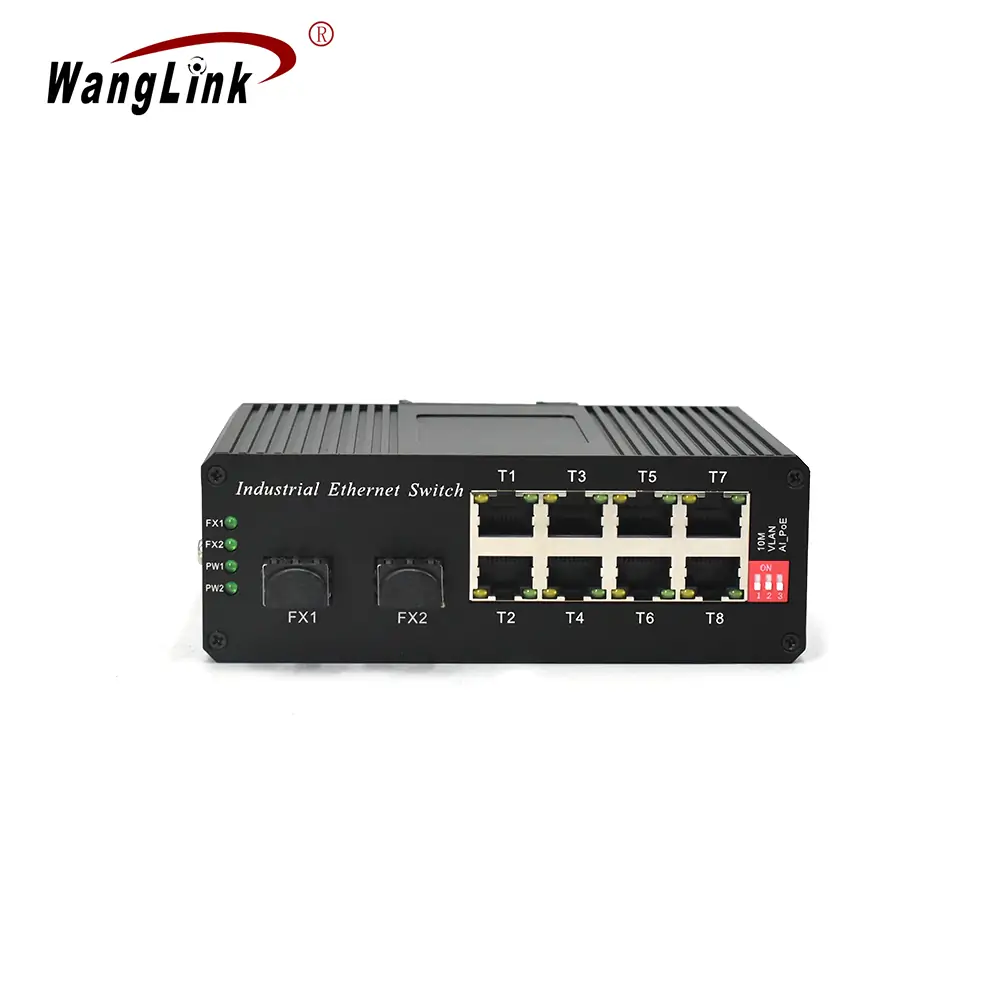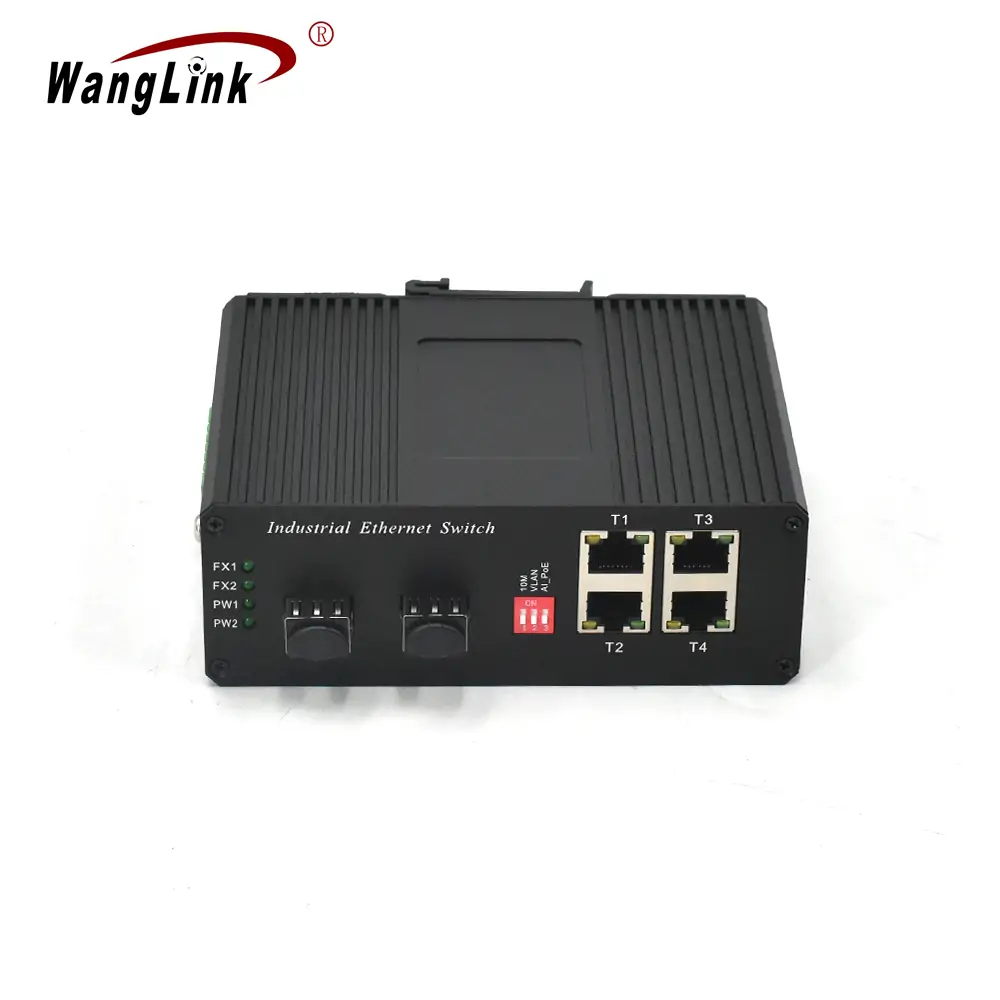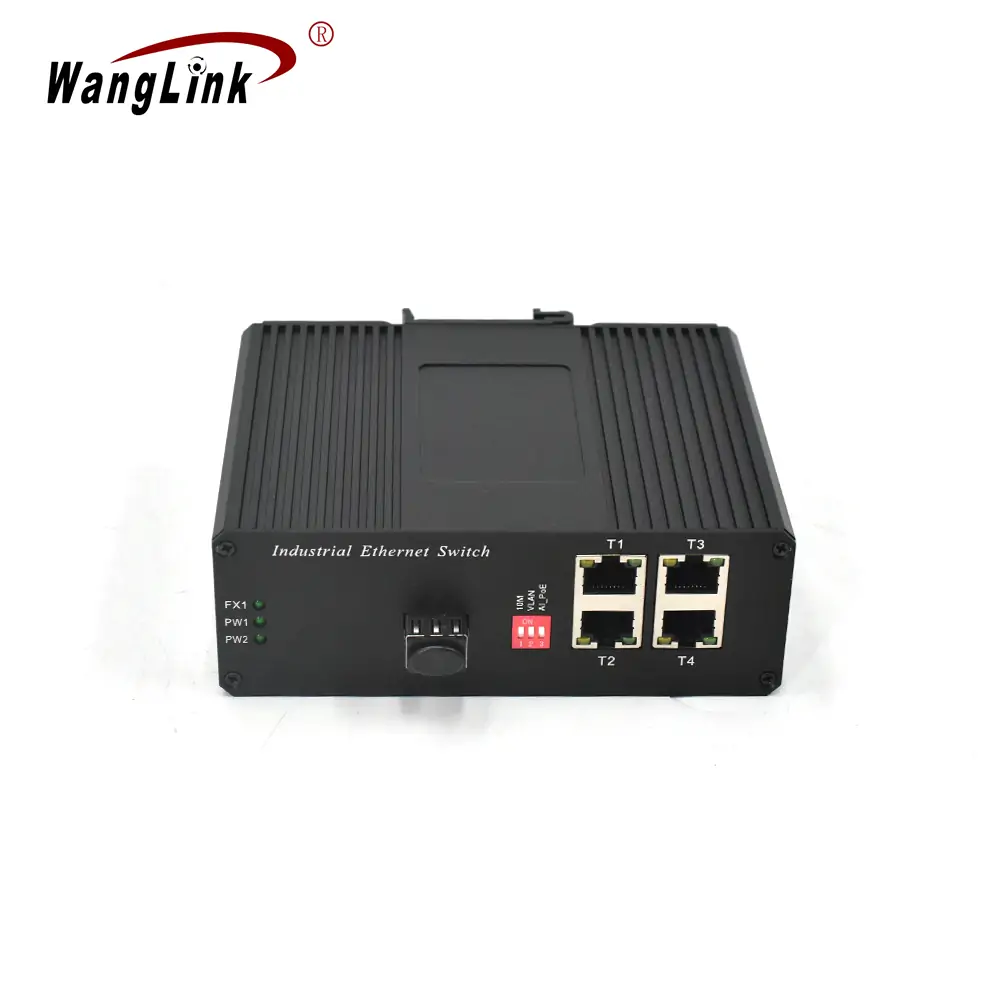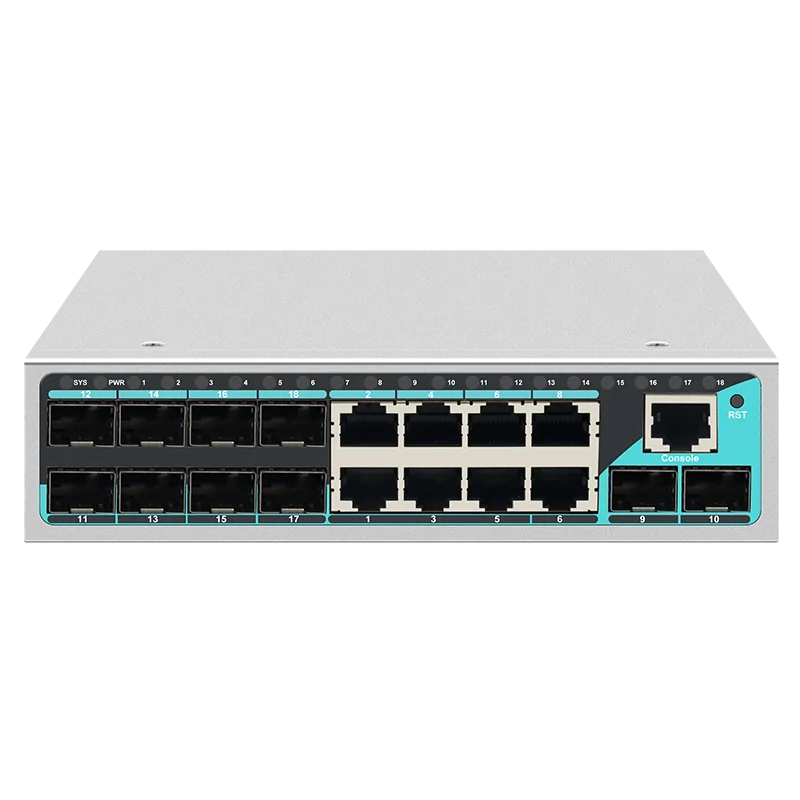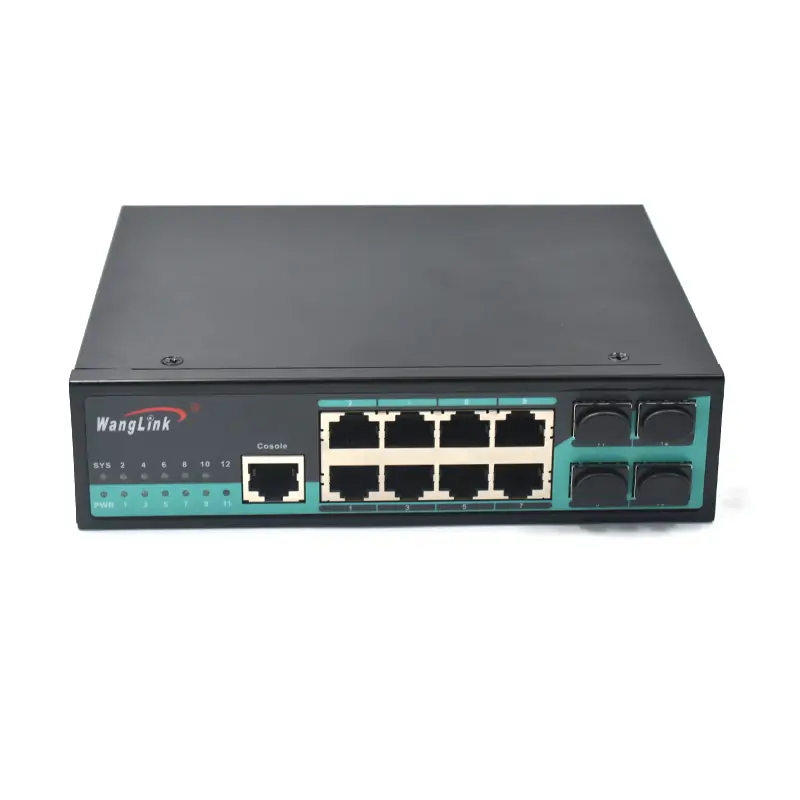DC Ethernet Switch: Complete Guide to Direct Current Powered Network Solutions
In today’s rapidly evolving network infrastructure landscape, DC ethernet switches have emerged as game-changing solutions for organizations seeking reliable, energy-efficient connectivity. These specialized network devices, powered by direct current sources, offer unique advantages over traditional AC-powered switches, making them ideal for various industrial, telecommunications, and remote applications.

What is a DC Ethernet Switch?
A DC ethernet switch is a network switching device that operates on direct current power instead of the conventional alternating current (AC) power supply. These switches maintain all the standard networking functionalities while offering enhanced power efficiency, reliability, and compatibility with DC power systems commonly found in industrial environments, telecommunications facilities, and renewable energy installations.
Key Characteristics of DC Ethernet Switches
- Power Input: Operates on DC voltage ranges typically between 12V to 48V
- Energy Efficiency: Higher power conversion efficiency compared to AC switches
- Reliability: Reduced power conversion stages minimize failure points
- Compatibility: Seamless integration with existing DC power infrastructure
Types of DC Ethernet Switches
1. Industrial DC Ethernet Switches
Industrial-grade DC ethernet switches are designed to withstand harsh environmental conditions while providing reliable network connectivity. These switches feature:
- Extended temperature ranges (-40°C to +85°C)
- Vibration and shock resistance
- EMI/EMC compliance
- DIN rail mounting options
Popular models include the ISL802P Industrial Fast Ethernet Din Rail Switch PoE 8 Port and ISL402P Fast Ethernet Industrial 4 Port Din Rail Mount PoE Switch.
2. PoE DC Ethernet Switches
Power over Ethernet (PoE) enabled DC ethernet switches combine network connectivity with power delivery capabilities. These switches can power connected devices such as IP cameras, wireless access points, and IoT sensors directly through the ethernet cable.
3. Managed DC Ethernet Switches
Managed DC ethernet switches offer advanced network management features including:
- VLAN configuration
- Quality of Service (QoS) controls
- Port mirroring and monitoring
- SNMP support
- Web-based management interfaces
The ISG804M Gigabit Industrial 8 Port Ethernet Switch Managed exemplifies this category with comprehensive management capabilities.

Advantages of DC Ethernet Switches
Power Efficiency Benefits
| Feature | DC Ethernet Switch | Traditional AC Switch |
|---|---|---|
| Power Conversion Stages | 1-2 stages | 3-4 stages |
| Energy Loss | 5-10% | 15-25% |
| Heat Generation | Lower | Higher |
| Power Factor | Near Unity | 0.6-0.8 |
| Standby Power | Minimal | Significant |
Reliability and Maintenance
DC ethernet switches offer superior reliability due to:
- Fewer Power Conversion Components: Reduced complexity means fewer potential failure points
- Lower Operating Temperatures: Improved efficiency results in less heat generation
- Simplified Power Infrastructure: Direct integration with DC power systems
- Enhanced Surge Protection: Better resilience against power fluctuations
Cost-Effectiveness
- Reduced Energy Costs: Lower power consumption translates to decreased operational expenses
- Simplified Installation: No need for AC-DC converters in DC-powered environments
- Extended Equipment Lifespan: Lower operating temperatures increase component longevity
- Maintenance Savings: Fewer components require less maintenance
Applications and Use Cases
Telecommunications Infrastructure
Telecommunications facilities extensively use DC ethernet switches for:
- Central Office Equipment: Connecting various network elements
- Base Station Connectivity: Providing reliable backhaul connections
- Data Center Interconnects: Enabling high-speed data transmission
- Emergency Power Systems: Maintaining connectivity during power outages
Industrial Automation
Manufacturing and industrial environments benefit from DC ethernet switches through:
- Factory Floor Networks: Connecting PLCs, sensors, and control systems
- Process Control Systems: Ensuring reliable communication between components
- Safety Systems: Providing redundant network paths for critical applications
- Remote Monitoring: Enabling real-time data collection from distributed sensors
Renewable Energy Systems
Solar and wind power installations utilize DC ethernet switches for:
- Inverter Communication: Monitoring and controlling power conversion equipment
- Energy Management Systems: Optimizing power generation and distribution
- Grid Integration: Facilitating communication with utility systems
- Remote Monitoring: Enabling off-site system monitoring and maintenance
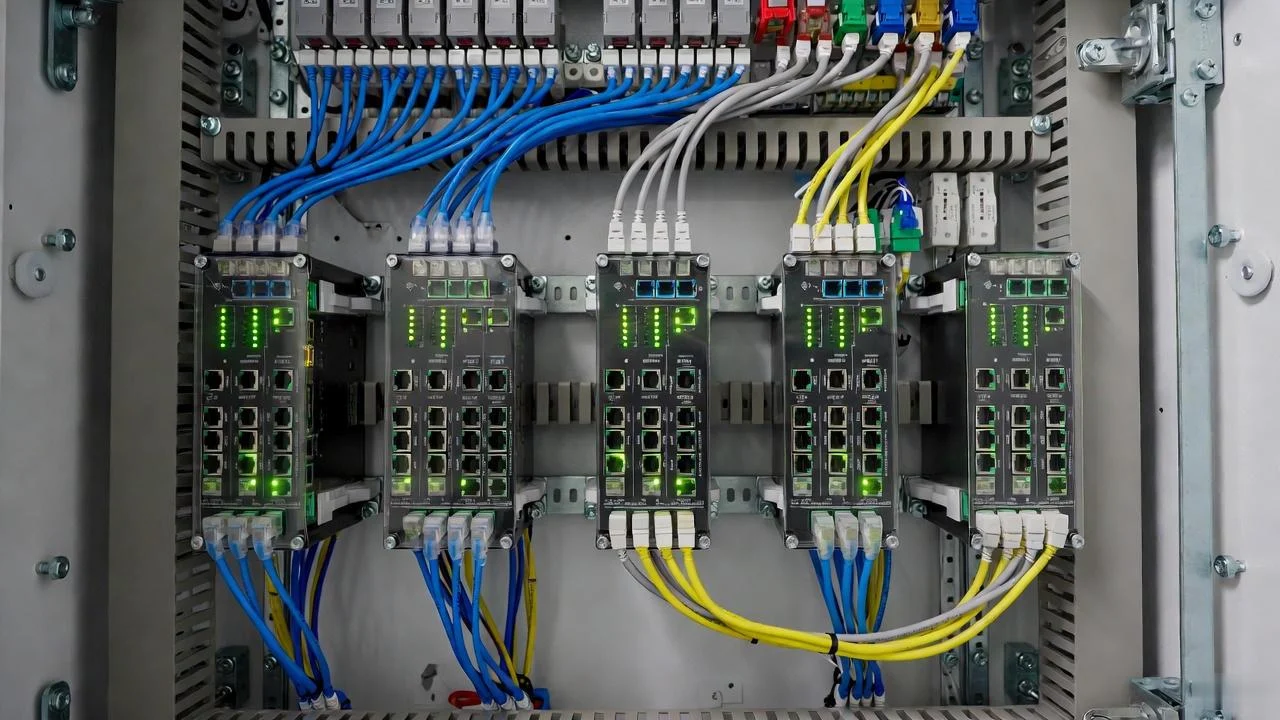
Case Study: Smart Manufacturing Implementation
Background
TechFlow Manufacturing, a mid-sized automotive parts manufacturer, faced challenges with their existing AC-powered network infrastructure. Frequent power fluctuations in their industrial environment caused network disruptions, affecting production efficiency and data collection from their IoT sensors.
Solution Implementation
The company partnered with Wanglink to implement a comprehensive DC ethernet switch solution:
- Assessment Phase: Network audit revealed 45 connection points requiring reliable connectivity
- Design Phase: Custom solution featuring ISG1602M Gigabit Industrial 16 Port Managed Ethernet Switch units
- Installation Phase: Deployment of 8 DC ethernet switches across three production lines
- Integration Phase: Connection to existing 48V DC power infrastructure
Results Achieved
| Metric | Before Implementation | After Implementation | Improvement |
|---|---|---|---|
| Network Uptime | 94.2% | 99.7% | +5.5% |
| Power Consumption | 2,400W | 1,680W | -30% |
| Maintenance Calls | 12/month | 2/month | -83% |
| Data Collection Reliability | 87% | 98% | +11% |
Key Success Factors
- Proper Planning: Comprehensive site survey and power analysis
- Quality Equipment: Industrial-grade DC ethernet switches from Wanglink
- Professional Installation: Certified technicians ensuring optimal configuration
- Ongoing Support: 24/7 technical support and monitoring
Selection Criteria for DC Ethernet Switches
Power Requirements
When selecting a DC ethernet switch, consider:
- Input Voltage Range: Ensure compatibility with your DC power system
- Power Consumption: Calculate total power requirements including connected devices
- PoE Budget: Determine power needs for PoE-enabled devices
- Redundancy: Consider dual power input options for critical applications
Port Configuration
| Port Type | Description | Typical Use Cases |
|---|---|---|
| Fast Ethernet (100Mbps) | Standard connectivity | Basic device connections |
| Gigabit Ethernet (1Gbps) | High-speed connectivity | Server connections, uplinks |
| SFP/SFP+ | Fiber optic connectivity | Long-distance connections |
| PoE/PoE+ | Power and data delivery | IP cameras, wireless APs |
Environmental Considerations
- Operating Temperature: Match switch specifications to environmental conditions
- Humidity Resistance: Ensure adequate protection for humid environments
- Vibration Tolerance: Consider mechanical stress in industrial applications
- EMI/EMC Compliance: Verify electromagnetic compatibility requirements
Installation and Configuration Best Practices
Pre-Installation Planning
- Site Survey: Assess environmental conditions and power availability
- Network Design: Plan switch placement and cable routing
- Power Calculation: Verify adequate DC power capacity
- Documentation: Create detailed installation and configuration plans
Installation Guidelines
- Mounting: Use appropriate mounting hardware for environmental conditions
- Ventilation: Ensure adequate airflow for heat dissipation
- Grounding: Implement proper grounding for safety and EMI protection
- Cable Management: Organize cables to prevent interference and facilitate maintenance
For detailed installation guidance, refer to our PoE Switch Installation and Management Tips.
Configuration Considerations
Managed DC ethernet switches require proper configuration for optimal performance:
- VLAN Setup: Segment network traffic for security and performance
- QoS Configuration: Prioritize critical traffic flows
- Security Settings: Implement access controls and monitoring
- Backup Configuration: Maintain configuration backups for quick recovery
Understanding the differences between Layer 2 and Layer 3 switches is crucial for proper network design.
Maintenance and Troubleshooting
Preventive Maintenance
Regular maintenance ensures optimal DC ethernet switch performance:
- Visual Inspection: Check for physical damage and loose connections
- Temperature Monitoring: Verify operating temperatures remain within specifications
- Power Supply Verification: Test DC power supply stability and voltage levels
- Firmware Updates: Keep switch firmware current for security and performance
Common Issues and Solutions
| Issue | Symptoms | Solution |
|---|---|---|
| Power Fluctuations | Intermittent connectivity | Install power conditioning equipment |
| Overheating | Performance degradation | Improve ventilation, clean dust buildup |
| Port Failures | No link on specific ports | Replace faulty port modules or entire switch |
| Configuration Loss | Default settings restored | Restore from backup configuration |
Future Trends in DC Ethernet Switching
Emerging Technologies
- Higher Power PoE: Support for 90W+ PoE applications
- AI-Powered Management: Intelligent network optimization and predictive maintenance
- Edge Computing Integration: Built-in processing capabilities for IoT applications
- Enhanced Security: Advanced threat detection and mitigation features
Market Developments
The DC ethernet switch market continues to grow driven by:
- Increasing adoption of renewable energy systems
- Expansion of industrial IoT applications
- Growing demand for energy-efficient networking solutions
- Development of smart city infrastructure
Why Choose Wanglink for DC Ethernet Switches
As a leading ethernet switch manufacturer with over 13 years of experience, Wanglink offers comprehensive DC ethernet switch solutions:
Manufacturing Excellence
- 13+ Years Experience: Proven track record in network equipment manufacturing
- Advanced R&D: Continuous innovation in DC switching technology
- Quality Assurance: Rigorous testing and quality control processes
- Global Compliance: Products meet international standards and certifications
Product Portfolio
Wanglink’s extensive DC ethernet switch lineup includes:
- Industrial-grade switches for harsh environments
- PoE-enabled switches for power-hungry devices
- Managed switches with advanced features
- Custom solutions for specific applications
Service Advantages
- One-Stop OEM/ODM: Complete customization from PCBA to packaging
- Expert Support: Industry-leading technical expertise
- Inventory Guarantee: $30 million inventory for rapid delivery
- Flexible Terms: Various payment and contract options
For more information about our customization services or to discuss your specific requirements, contact us today.
Frequently Asked Questions (FAQ)
Q1: What voltage ranges do DC ethernet switches typically support?
A: Most DC ethernet switches support voltage ranges from 12V to 48V DC, with some industrial models supporting wider ranges from 9V to 60V DC. The specific voltage range depends on the switch model and intended application.
Q2: Can DC ethernet switches provide PoE power to connected devices?
A: Yes, many DC ethernet switches include PoE capabilities. These switches can deliver IEEE 802.3af (15.4W), 802.3at (30W), or even higher power levels to connected devices while operating on DC power themselves.
Q3: Are DC ethernet switches more reliable than AC-powered switches?
A: Generally yes, DC ethernet switches offer improved reliability due to fewer power conversion stages, reduced heat generation, and simplified power infrastructure. This results in fewer potential failure points and extended equipment lifespan.
Q4: What industries commonly use DC ethernet switches?
A: DC ethernet switches are widely used in telecommunications, industrial automation, renewable energy systems, transportation, marine applications, and any environment with existing DC power infrastructure.
Q5: How do I calculate the power requirements for a DC ethernet switch installation?
A: Calculate the total power consumption of the switch itself plus any PoE devices it will power. Add a 20-30% safety margin and ensure your DC power supply can handle the total load with adequate headroom.
Q6: Can DC ethernet switches be managed remotely?
A: Yes, managed DC ethernet switches offer comprehensive remote management capabilities through web interfaces, SNMP, CLI, and various network management protocols, just like their AC counterparts.
Q7: What’s the difference between industrial and commercial DC ethernet switches?
A: Industrial DC ethernet switches are designed for harsh environments with extended temperature ranges, vibration resistance, and EMI protection. Commercial switches typically operate in controlled environments with standard temperature and humidity ranges.
Q8: How long is the typical lifespan of a DC ethernet switch?
A: Quality DC ethernet switches typically have a lifespan of 10-15 years or more, depending on operating conditions and maintenance. The reduced heat generation in DC switches often extends their operational life compared to AC switches.
For additional technical information and product specifications, visit our knowledge base or explore our complete product catalog.
To learn more about dc ethernet switch solutions and find the perfect switch for your application, contact Wanglink today at [email protected] or WhatsApp: +8613544167258.

